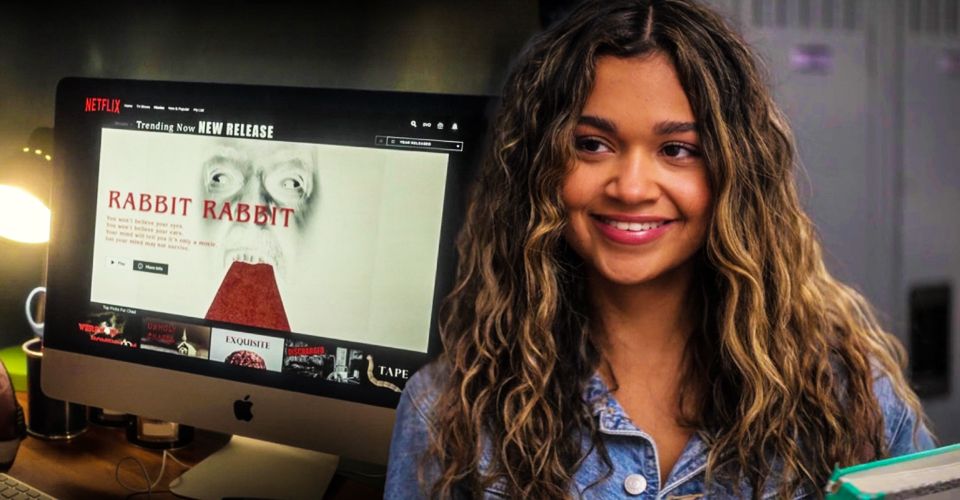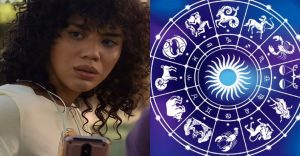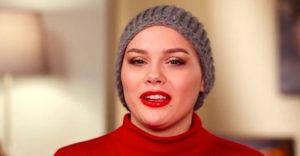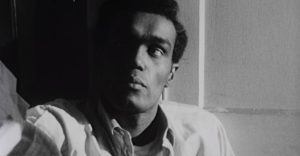American Horror Stories Drive In Ending: Rabbit, Rabbit’s Future Explained

“Drive In,” American Horror Stories’ third episode, involves a cursed movie, Rabbit, Rabbit, that causes terror for drive-in theater attendees and whose ending suggests a continued future beyond the rampage of the episode. Following American Horror Stories’ premiere episodes that brought audiences back to American Horror Story’s Murder House, it’s curious what “Drive In”’s future connection to the AHS world will entail. “Drive In” features a new group of characters, featuring Outer Banks’ Madison Bailey, Rhenzy Feliz, John Carroll Lynch, and Naomi Grossman.
Similar to AHS: 1984, “Drive In” is Ryan Murphy’s meta homage to slasher movies of the ‘80s, albeit with a mix of zombie-like apocalyptic horror. Many of the takes that the young characters have on horror cinema seem to be opinions of Murphy himself, complementing the work of ‘70s and ‘80s directors that inspired his own horrifying series. American Horror Stories’ homage goes a step further by casting classic John Carpenter horror scream queen Adrienne Barbeau as Verna, the drive-in theater’s projectionist employee.
American Horror Stories episode 3 introduces a new horrific vehicle: watching movies. The episode discusses the background of movies being banned or controversial because officials believe violent movies increase violence in actual society. At the same time, American Horror Stories‘ “Drive In” takes it a step further by the fictional cursed movie, Rabbit, Rabbit, actually causing its viewers to be psychologically triggered to become zombie-like creatures that go on murder sprees. The terrifying episode signals new horror directions for Murphy’s franchise, with an intriguing cliffhanger ending.
What Happened in Drive In’s Ending

Kelley and Chad are two of the only survivors of the massacre that ensues from the Rabbit, Rabbit screening, having to fight their way out of the parking lot. The teens only kill so many of the hundred-odd attendees of the screening, meaning plenty are still out murdering people in the town. With a shotgun and pair of scissors, Kelley and Chad venture out of the projection room to the zombie-like apocalyptic world around them.
The duo realizes what the movie has done to their friends, vowing to find Larry Bitterman, Rabbit, Rabbit’s director, and destroy the film’s final print. Kelley and Chad arrive at Bitterman’s home, setting his entire house on fire with the director still inside, hoping to end the curse and his evil intentions for good. This may have worked back in 1986, but American Horror Stories introduces a Black Mirror-Esque twist in the final moments, showing Rabbit, Rabbit as an option on Netflix, who just bought the rights from Bitterman before his death. Kelly and Chad are intimate while the movie pops up on the website, leaving an open-ended sinister finale.
Drive In Flips A Classic Teen Horror Trope On Its Head

Murphy is known for including classic horror tropes in AHS, but one trope he specifically flips on its head in “Drive In” is the idea that the teenagers who have sex will die. In “Drive In,” it’s the teenagers who do, like Kelley and Chad, that end up surviving because they’re not actually watching the movie. It’s the steam from the teenage couple’s makeout session that prevents them from seeing the screen and becoming a victim to its curse. It also takes the modern idea of “Netflix and Chill” and uses it as a savior for teens, considering the movies are played but rarely actually watched or engaged with.
Drive In Marks An AHS Zombie Return

Most of American Horror Story’s seasons involve ghosts and serial killers as the terrifying presences, only straying in a few seasons. Zombies, one of horror’s most commonly used and classic villain tropes, have only really made one appearance in American Horror Story. In season 3’s Coven, Evan Peters’ character is turned into a Frankenstein’s Monster-like zombie after Madison and Zoe bring him back to life. The major appearance of zombies occurs in the same season when Delphine LaLaurie’s deceased family members return from their graves as traditional zombies, trying to attack and kill the living inhabitants of the coven’s house.
The zombies were conjured by Marie Leveau in both instances, though American Horror Stories’ undead beings take a different form that doesn’t indicate an enchantment by the Coven character. In “Drive In,” people are turned into zombies that eat people’s flesh, lose any conception of themselves or their cognitive abilities, don’t technically die before being changed, and can be killed without the classic restrictions of zombies being stabbed in the brain or having their bodies completely destroyed.
Rabbit, Rabbit’s Curse Explained

Chad explains that the title of Rabbit, Rabbit comes from an old British superstition stating that saying the phrase will bring its chanters good luck for 30 days. Larry Bitterman, the movie’s director, explains that he first realized the power of the movie when he walked in on his editor splicing an early conception of the movie, seeing that she had turned into a zombified version of herself that began cutting off her own fingers. Bitterman studied intrusive memory formation and psychological manipulation that could cause a legitimate change in the audiences, finally discovering the sinister formula.
In 1986, the movie was shown in a limited screening that ended with multiple people dying and turning into rabid, zombie-like creatures. A Senator’s wife demanded the movie be banned, with all surviving copies destroyed. Bitterman found another print that he had hidden away, adding more of his research to this copy to perfect the manipulative effect the visuals had on the viewers. As the new version is shown in 2021, the effect is much more potent, turning many more horror fans into zombified killers.
What Does Rabbit, Rabbit’s Streaming Future Mean?

“Drive In” finishes with Kelley and Chad resorting to his bedroom, finishing the act they started at the beginning of the episode. The camera pans beyond them to Netflix, which has just uploaded Rabbit, Rabbit to its streaming service. As Larry Bitterman dies in his trailer, he screams to Kelley and Chad that burning the physical copy isn’t the end of the movie: “this is only Act 1.” While zombie victims from American Horror Stories‘ drive-in screening are still likely running around town causing bloody massacres, the movie being added to Netflix means ending the curse is virtually impossible.
The new release feature of Rabbit, Rabbit on Netflix includes a tidbit that the movie is trending, meaning plenty of people have already watched the movie and likely been affected themselves. Even if the movie is removed from Netflix, piracy runs rampant, so illegal streaming of the forbidden picture will continue to cause outbreaks. American Horror Stories leaves “Drive In” on this sinister cliff-hanger, implying this episode truly was only Act 1 of the movie’s curse on society and likely not its last appearance on AHS.
About The Author


















